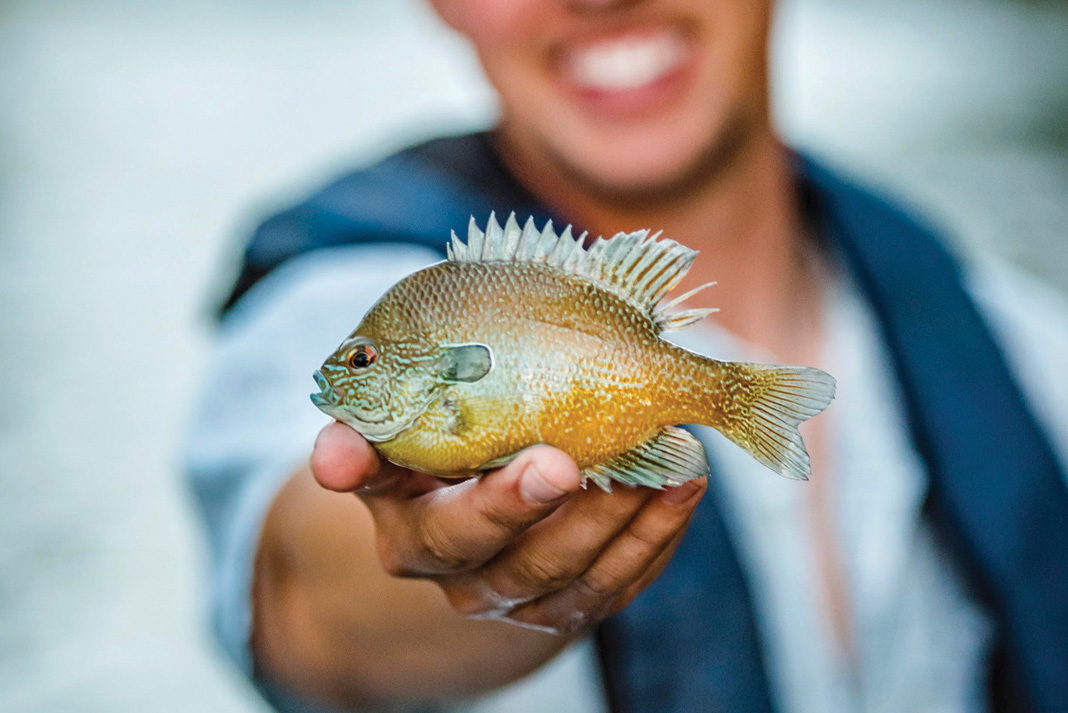Often overlooked in favor of bigger game, pound-for-pound panfish are some of the hardest fighting fish and hands down the tastiest. Chances are, you can find crappie, bluegill or white bass a few miles from your house. They’re a blast to catch—and more fun to eat. Three pros tell us how to target slab panfish.
Matthew Scotch of Lonestar Kayak Guide Service in North Texas targets crappie by first locating schools of bait near standing timber, brush piles, docks, rock piles and drop offs. A Thermocline Lures Mr. Fry in natural shad on a 1/32 ounce jighead is Scotch’s go-to bait. He throws the jig past the school and slowly lets it fall while swimming it back to the kayak.
On windy days, he’ll use a heavier jighead. He spools his medium-action spinning combo with 20-pound braid and a four-foot leader of eight-pound fluorocarbon. “This set-up gives me great sensitivity and the strength to pull slabs out of thick cover,” Scotch explains. It takes a sensitive fish finder to identify the thermocline. Bait and fish often associate with the temperature change between surface and deep water.

Wilderness Systems Pro JD Desrosiers loves catching bluegill in the backwaters of South Carolina. He uses a one-two punch to target jumbo ‘gills around cypress stumps and adjacent flats. He begins by casting a 1/8-ounce black in-line spinner. Using artificial lures saves time and money, JD doesn’t have to take time to change bait or money to pay for it.
If the fish are being lazy, he will thread a trusty red worm onto the hook about two feet below a weighted cork. He typically throws these baits on four-pound test and an ultralight rod and reel. “If you find yourself catching small fish, move to slightly deeper water to catch bigger fish,” Desrosiers suggests.
Gary Ribet runs Froggy Waters Outdoors North Carolina. He cuts his teeth on white bass. In late winter through early summer, whites move into rivers to feed and spawn. Ribet’s favorite bait is a homemade single spinbait with a Colorado thumper blade, thin wire and paddle or curly tail grub threaded onto the hook. He will slow roll the bait, bumping it off rocks, logs and the bottom.
If that doesn’t work, he will try a square bill crankbait with rattles and a feathered rear treble that gives the lure a larger profile. He uses a seven-foot rod and 1000-series spinning reel. Ribet adds, “To catch bigger fish, go to bigger baits, deeper water and slower presentations.” Noise is another key to putting more fish on the stringer, Ribet says. “Rattles, beads and spinners make them curious.”

 This article was first published in the Winter 2016 issue of Kayak Angler Magazine.
This article was first published in the Winter 2016 issue of Kayak Angler Magazine. 




